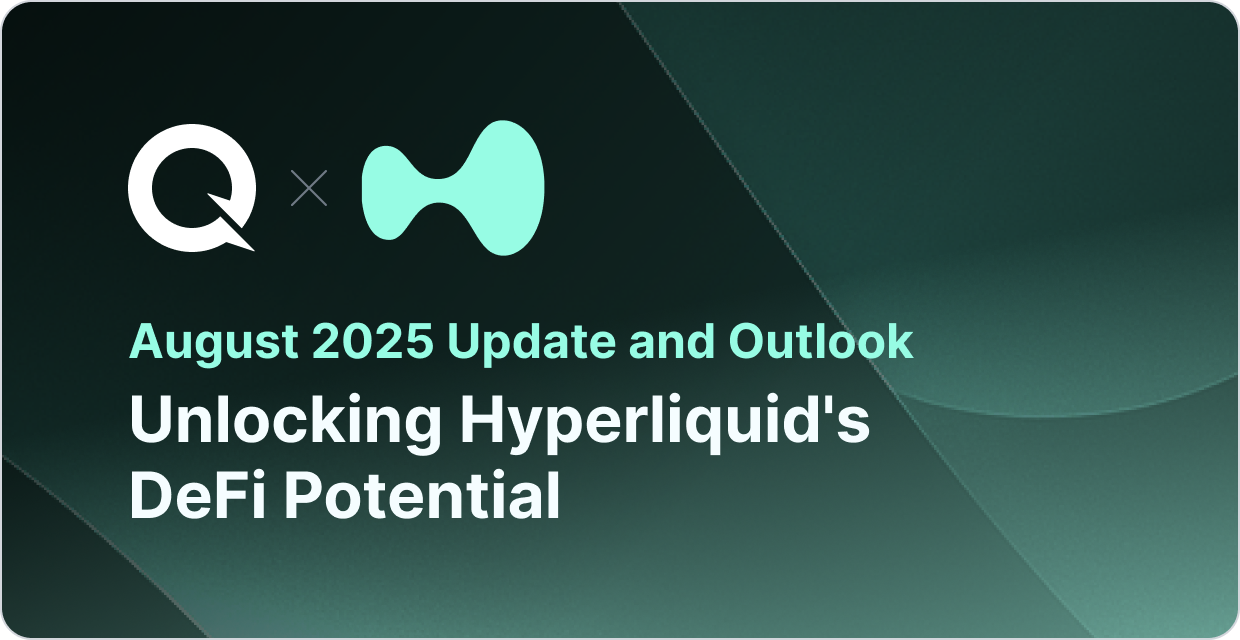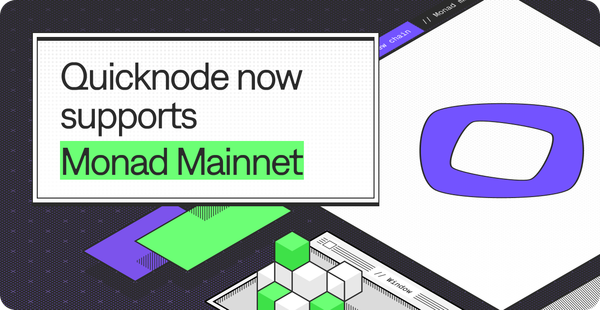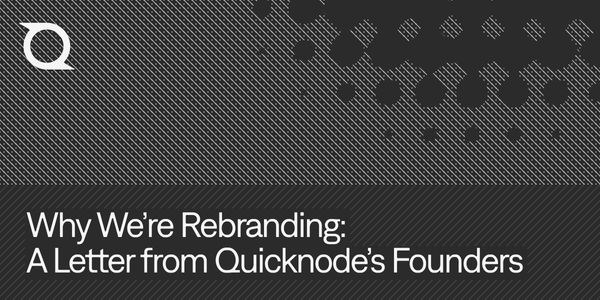Unlocking Hyperliquid's DeFi Potential: August 2025 Update and Outlook
Discover the latest mid-2025 updates on Hyperliquid’s high-throughput L1, market dominance in perps, and growing DeFi ecosystem. Explore new dApps, HIP-3 permissionless markets, and how QuickNode powers seamless integration for traders and developers.

In our June 2025 analysis of the Hyperliquid protocol, we explored its foundational architecture, market dominance in perpetual futures, and tokenomics driving its growth. Building on that foundation, this update dives into the evolving ecosystem, recent adoption trends, and forward-looking insights as of mid-2025. With Hyperliquid maintaining a 70-75% share of the perp DEX market and processing billions in daily volume, we're focusing here on the burgeoning DeFi applications, institutional integrations, and potential challenges ahead. This complements our earlier macro overview, highlighting how developers and traders can leverage QuickNode's infrastructure for seamless access to Hyperliquid's high-throughput L1.
Hyperliquid’s Dual-Layer Architecture: A Quick Refresher and New Developments
As detailed in our June post, Hyperliquid operates on its own L1 blockchain with HyperCore handling core trading functions (order matching, risk management) and HyperEVM providing an EVM-compatible layer for DeFi apps. Recent months have seen enhanced integration between these layers, enabling real-time data feeds like oracle-free prices directly from HyperCore to HyperEVM dApps. This has fueled a surge in ecosystem activity, with total value locked (TVL) across protocols exceeding $500M and daily transactions hitting new highs.
Key updates since June:
- Throughput Milestones: Hyperliquid now supports up to 200,000 orders per second with sub-second block times. Migrations from Solana-based DEXs continue, driven by lower fees and better uptime (99.99%).
- Revenue Dominance: Capturing 35% of all blockchain revenue in 2025, Hyperliquid's model of 97% fee buybacks for $HYPE holders remains deflationary and attractive to long-term investors.
For a deeper dive into the base architecture and tokenomics, refer back to our original Hyperliquid analysis.
Current Ecosystem Adoption: Spotlight on Key dApps
Hyperliquid's DeFi landscape has matured rapidly, with over 500,000 unique users and institutional interest accelerating. Unlike traditional DEXs, its hybrid model combines centralized-like performance with decentralized security, making it ideal for high-frequency trading and complex derivatives.
Here are some standout protocols building on HyperEVM, each contributing to the platform's ~20% share of overall crypto DEX volume:
- Hyperlend: A high-performance lending market featuring liquid vaults, flash loans, and risk-segmented pools. With TVL over $200M, it supports seamless borrowing against perp positions, reducing liquidation risks in volatile markets.
- Kinetiq: Focused on staking and derivatives, offering liquid staking via kHYPE, institutional-grade iHYPE, and an Exchange-as-a-Service for custom perp markets. It's gained traction among funds looking for yield optimization, with staking rewards averaging 15–20% APY.
- Felix Protocol: A permissionless lending platform for minting feUSD, a stablecoin backed by CDPs and stability pools. Boasting >$100M TVL, it integrates natively with HyperCore for oracle-free pricing, minimizing external dependencies (The Defiant).
- HyperSwap: Hyperliquid's native DEX blending AMM and CLOB models for efficient swaps. With $70M+ TVL and $2B in cumulative volume, it's become a go-to for liquidity providers seeking low-slippage trades.
- Ventuals: An innovative derivatives platform for pre-IPO valuations with up to 10x leverage. Currently in testnet, its mainnet launch is anticipated to attract venture-focused traders, expanding Hyperliquid's reach beyond crypto-native assets.
- Hyperion DeFi: A yield aggregator with $75M TVL, optimizing returns across lending and staking pools. It exemplifies how HyperEVM's composability drives multi-protocol strategies.
These dApps highlight Hyperliquid's shift toward a full-fledged on-chain finance hub. Perps still drive 65% of activity, but DeFi composability adds new layers of utility. QuickNode users can easily deploy nodes or APIs to interact with these protocols, ensuring low-latency access for automated trading bots or analytics.
HIP-3: The Next Evolution in Permissionless Markets
A major catalyst on the horizon is HIP-3, Hyperliquid's proposal for fully permissionless perp markets. The MVP launched on testnet in May 2025, allowing anyone to create custom futures contracts without governance approval. (Blocmates coverage • Gate news • Testnet Explorer)
Key features include:
- Custom Assets: Trade anything from tokenized real-world assets (RWAs) to exotic indices.
- Enhanced Risk Engine: AI-driven margining to handle increased complexity.
- Ecosystem Incentives: Grants for builders integrating HIP-3, potentially boosting dApp TVL by 2–3x.
Early adopters report smoother onboarding, and mainnet rollout could solidify Hyperliquid's lead in decentralized derivatives.
Addressing Potential Challenges
While Hyperliquid's growth is impressive, competition from emerging L1s and Layer-2 solutions could pressure its market share, potentially dipping to 50–60% by year-end. Regulatory scrutiny on perps remains a watchpoint, though its decentralized nature offers resilience. Additionally, as adoption scales, ensuring network stability amid high volumes will be crucial—areas where QuickNode's robust infrastructure can provide enterprise-grade support.
Projections and Trends for Late 2025
Looking ahead, Hyperliquid is poised for continued expansion:
- Institutional Uptake: Examples like Nasdaq-listed Eyenovia holding over 1M HYPE tokens signal broader acceptance (press release). Expect more traditional finance integrations, including RWA perps.
- Market Dynamics: With DEXs capturing 20% of crypto volume overall, Hyperliquid's focus on perps positions it to benefit from projected $3.48T derivatives volume in 2025.
- Innovation Pipeline: Watch for cross-chain bridges and AI-enhanced trading tools, further differentiating it from rivals.
About QuickNode
QuickNode is the top development platform for building on Hyperliquid and 70+ other chains. We provide tailored RPC endpoints, analytics tools, and a globally balanced infrastructure that powers everything from trading bots to large-scale enterprise applications. With guaranteed reliability, a user-friendly interface, and end-to-end support, QuickNode allows builders and enterprises to realize their ideas on-chain rapidly.
Stay tuned for more insights—subscribe to our blog for the latest in blockchain infrastructure.





